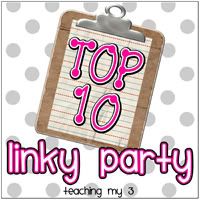John Hattie analyzed over 50,000 research studies on the effects of a long list of variables in the classroom. Assuming we can't choose the students we teach, the following are a list of the top 10 Teacher Tools that have the greatest effect on student achievement. Those listed below were found to have a .70 or greater effect. A .50 is one year, and 1.0 is two years.
9. Feedback - Most powerful when it is from the student to the teacher. When teachers seek, or at least are open to, feedback from students as to what students know, what they understand, where they make errors, when they have misconceptions, when they are not engaged—then teaching and learning can be synchronized and powerful. Feedback to teachers helps make learning visible.
8. Teacher clarity - Clear objectives aligned with specific outcomes
7. Micro teaching - Lesson “post-morterms” where a teacher reviews a video of their teaching to find out what has worked and what needs to be improved.
6. Reciprocal teaching - Summarizing, predicting, questioning & clarifying
5. Providing formative evaluation - Continual evaluation of all aspects of a project or program to improve implementation and outcomes. The timing of feedback is critical here, as opposed to summative assessments which yield information months later.
4. Teacher credibility - Students are very perceptive about knowing which teachers can make a difference to their learning and teachers who command this credibility are most likely to make the difference.
3. Response to intervention - A method of preventing academic failure through early intervention and frequent progress measurement for children who are having difficulties.
2. Piagetian programs - In the US, this is also known as Developmentally Appropriate programs. Programs that aim to set pupils work that is one step ahead of their current level, based on the work of Swiss psychologist Jean Piaget, who believed that children go through successive phases of development.
1 – Self reported grades - This is when students have a “reasonably accurate understanding” of their levels of achievement and chances of success based on their past experiences of learning. This, the highest recorded influence in the study, simply means that students predict their performance – usually accurately – on their past achievement. When kids set targets, they invariably reach them. We need to share targets with the kids – the most important thing for home is to have high expectations for their kids.Hattie suggests that teachers would have more success if they addressed students’ low self-efficacy before trying to raise their achievement. Dweck shows how to do this by promoting a Growth Mindset in the classroom.

